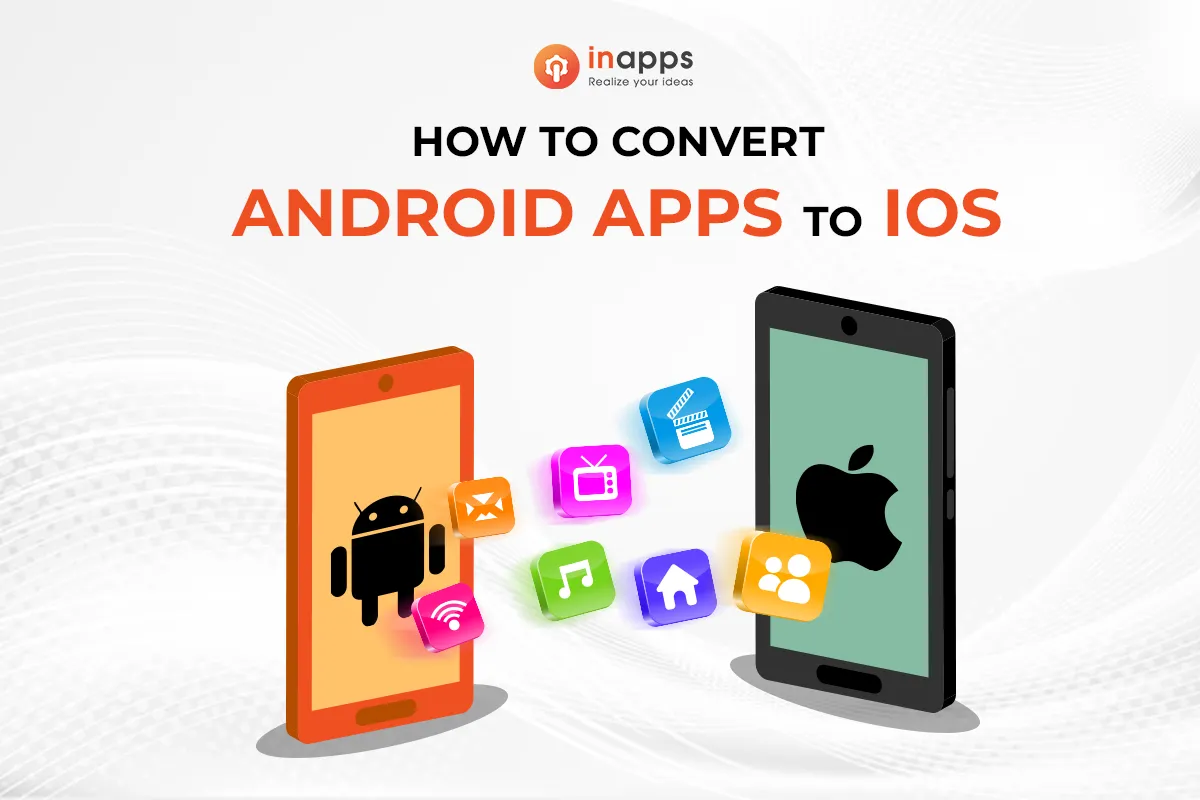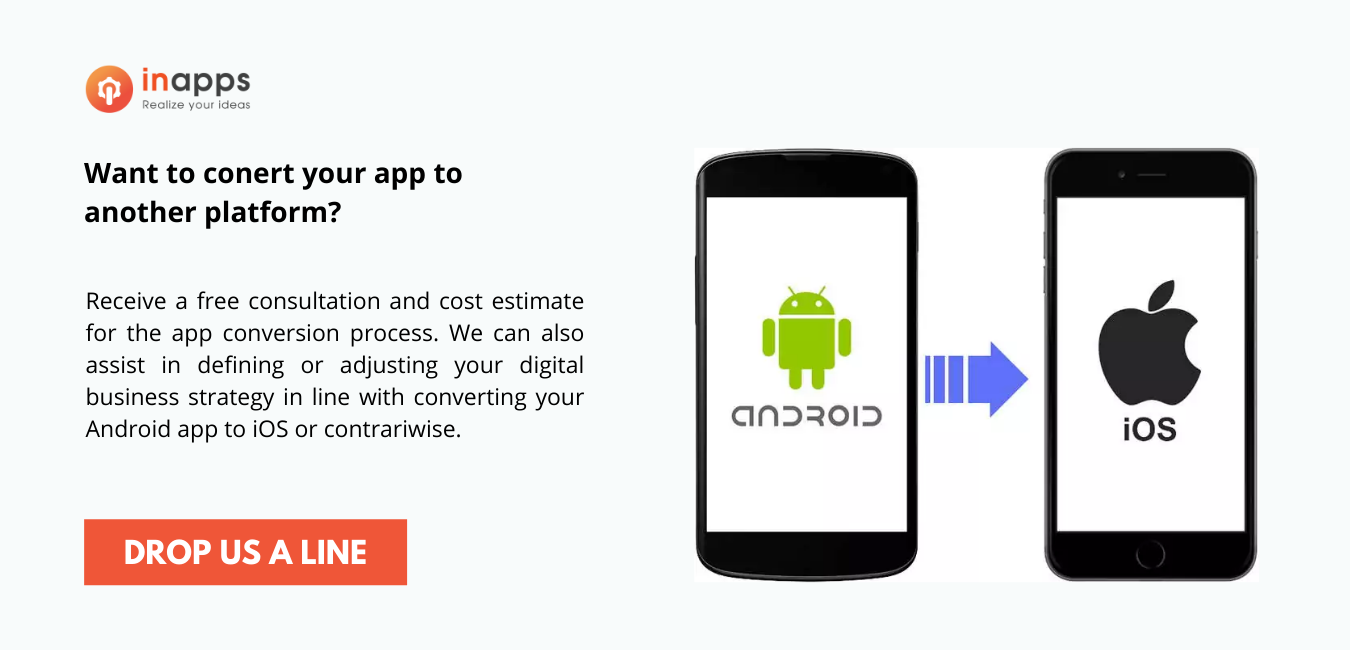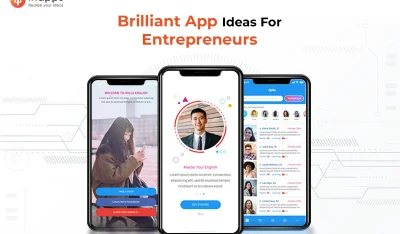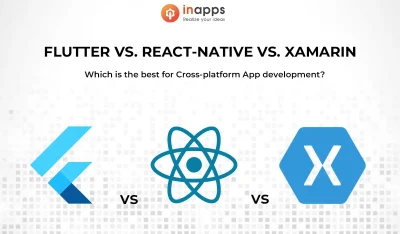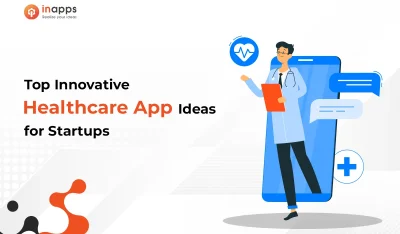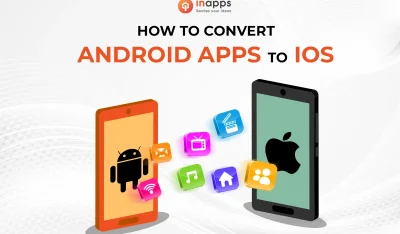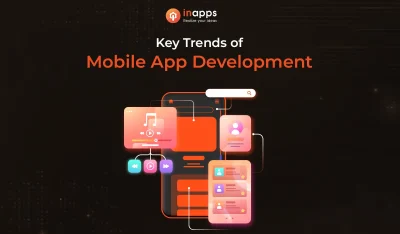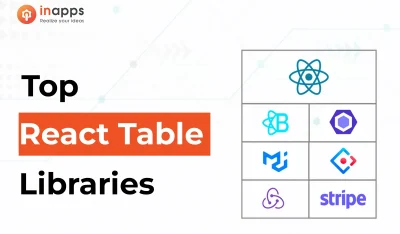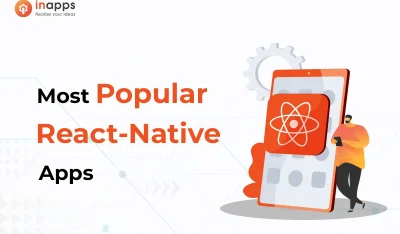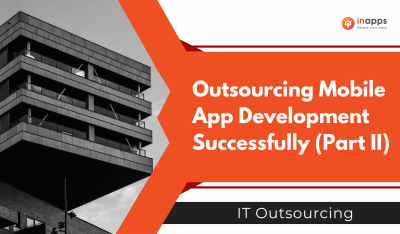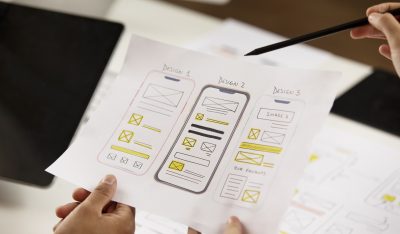- Home
- >
- Mobile apps development
- >
- Step-By-Step Guide to Convert Android Apps to iOS
If you’re looking for ways to convert Android apps to iOS, I’m guessing you’re one of the lucky app startups whose business is thriving.
In terms of time and money, starting your project with a single platform was a wise decision. Instagram, one of the most popular apps nowadays, was initially available only to Apple users. First, the app concept was finalized, and thousands of downloads provided positive feedback. Only then did Instagram’s team decide to port the iOS app to the Android platform.
By concentrating on one platform, Instagram could perfect its app, focusing on quality, user experience, and innovative features like filters. The initial release on iOS provided Instagram with valuable user feedback. They could iterate on their product based on real user experiences, improving and refining the app.
So if focusing on one single platform is so beneficial, why should you convert Android apps to iOS?
Why should you convert Android apps to iOS?
Before we begin with a detailed explanation of how to convert an Android app to iOS, let us first discuss the reasons for this process and how to create a successful app. Your app porting decision should be based on the following factors for a better outcome:
1. Current app indicators and metrics that are positive
The decision to convert Android apps to iOS should be based on measurable metrics. These are a sufficient number of downloads, active app users, user retention rate, revenue metrics, customer feedback and reviews, and so on.
Firstly, the number of downloads is a primary indicator of an app’s popularity and market acceptance. A high number of downloads suggests a strong demand for your app, which could translate well when introduced to a new platform. It’s important to compare the download numbers against industry averages or competitors to gauge success, so you’ll know where you stand in the big ocean.
About active app users, you need to look at daily and monthly active users (DAU and MAU). High engagement means users find value in your app, indicating potential success on another platform. Also, observe the growth trend in active users. A consistently upward trend suggests a growing and loyal user base.
Speaking of user retention rate, high retention rates are a sign of app stickiness and user satisfaction, essential for a successful platform transition. Analyze how different cohorts (users grouped by their sign-up dates) retain over time.
Revenue Metrics is the next app indicator and metric to see if you should convert Android apps to iOS. If the app is monetized, strong revenue metrics (like ARPU – Average Revenue Per User) can justify expansion to a new platform. Consistent revenue growth is a healthy indicator of the app’s financial viability.
Lastly, make sure your app has positive reviews and high ratings on the app store before converting your Android apps to iOS. Analyzing feedback can reveal strengths to replicate and weaknesses to address before platform migration.
2.Current market
The market is also an essential factor to consider before converting an Android app to iOS or vice versa. It makes no sense if 97 percent of the target audience uses a single platform, iOS or Android.
Once you’ve found some sense of security, converting an Android app to iOS can help you in various ways. Both mobile app platforms cover up to 97 percent of mobile devices available worldwide (as of November 2023).
While a small presence of HarmonyOS is emerging, Android and iOS continue to dominate the global smartphone OS landscape. Android maintains its clear leadership with a commanding 81% market share as of Q3 2023, followed by iOS at 16%. Meanwhile, Huawei’s HarmonyOS has shown promising growth, capturing a 3% share.
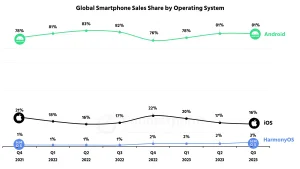
Global Smartphone OS Sales 2023. Source: counterpointresearch
Here are a couple of benefits available to any business owner who converts their Android apps to iOS:
- Possibility of expanding your market share while gaining new app users.
- The opportunity to add new app features. The process of converting an Android app to an iOS app is not the same as simply copying an app. It entails conforming to new platform specifics, and as a result, it may be possible to enhance a product with new functionality.
- Chance of boosting Return on Investment (ROI). A new application presents an excellent opportunity to implement a new app monetization model.
3. Apps that are converted from Android apps to ios
Evernote, a popular note-taking app, initially launched on iOS in 2008. The app saw significant success and decided to expand to Android in 2010.
After reviewing key metrics and indicators, and seeing that they are positive, Evernote carefully adapted its interface and features to suit Android users while maintaining core functionalities. They conducted thorough market research to understand the Android user base and competition.
The expansion was a success, leading to a significant increase in Evernote’s user base and further solidifying its position in the productivity app market. In 2019, Evernote reported having 225-250 million users, with 10% being paid users. This would translate to roughly 22-25 million paid users. Current stats are being updated.
What to consider when Convert Android Apps to iOS
Let’s look at the differences between the Android and iOS operating systems so you can better understand why the app conversion process is so time-consuming and difficult.
1. OS Versions Fragmentation
Both operating systems are updated regularly with new features. As a result, every successful app project should support the most recent OS versions. At the same time, not every customer chooses to upgrade their mobile device, so your app should be compatible with the most widely used operating systems.
In general, Apple users are more likely to change their devices, and thus the majority prefer to use the most recent OS versions. It would be best if you focused your efforts on the three most recent iOS versions. According to recent statistics, the three most popular iOS versions are iOS 17, iOS 16, and iOS 15.
- iOS 17 (2023 Release): This version has achieved a cumulative usage of 54.5%. It’s the most recent version and, as such, does not have a designated ‘last iOS’ for any iPhone model yet.
- iOS 16 (2022 Release): With a cumulative usage of 85.1%, iOS 16 follows as the second most used version. The iPhone X and iPhone 8 are the last models for which iOS 16 is the latest available version.
- iOS 15 (2021 Release): iOS 15 comes in third with a cumulative usage of 94.2%. It is the last version available for iPhone 7, the first-generation iPhone SE, and the iPhone 6s.
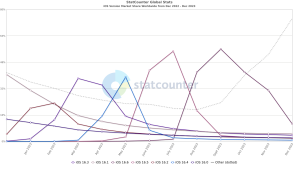
iOS version market share (Dec 2022- Dec 2023)
2. Distinctive Device Dimensions
It is critical to consider the devices and their screen sizes before beginning development, as it is critical for your app to display correctly on the screen, but also for optimizing user experience and interface functionality.
Different devices—from compact smartphones to large tablets—present unique challenges in terms of display resolution, aspect ratio, and user interaction. A well-designed app must adapt seamlessly to these variations, maintaining visual clarity, ease of navigation, and accessibility of features.
Employing responsive design techniques is essential; it involves creating flexible layouts and scalable elements that adjust to different screen sizes. This adaptability ensures that the app provides a consistent and engaging user experience irrespective of the device used.
In a market where user satisfaction is key, this thoughtful approach to design can significantly enhance the app’s appeal and usability.”
3. Navigation Buttons & Device Buttons
I want to highlight another important aspect of converting Android apps to iOS is the device buttons. These buttons affect how users interact with the application. Android users commonly use soft keys to return to a previous screen, whereas iOS users use back buttons or a new gesture of swiping from left to right.
It’s worth noting that the most recent generation of Apple devices and some Android smartphones lack buttons. This has a significant impact on user interaction with a device, and the way apps are designed. This factor influences the app’s interface design, with Android favoring vertical elements and iOS favoring vertical and horizontal elements. Furthermore, the app’s taps should not duplicate the functionality of the device’s buttons.
4. Distinctive Aspects of Programming Languages
It’s a common misconception that all it takes to convert an Android app to iOS is to translate the code. Programming languages, like other languages, have their syntax and semantics, rules, algorithms, etc. Both mobile operating systems use different languages.
Even if it appears that a feature on one platform works the same way as it does on another, the reality may be quite different. This means that if you decide to convert an existing Android app to iOS, the same app functionality on the latter platform may be time-consuming. This is a friendly reminder to help you understand why a simple feature can sometimes take longer than expected.
Any professional software developer understands this and optimizes app functionality for a new platform’s best operation and performance.
How to convert Android Apps to iOS: A Step-by-Step Guide
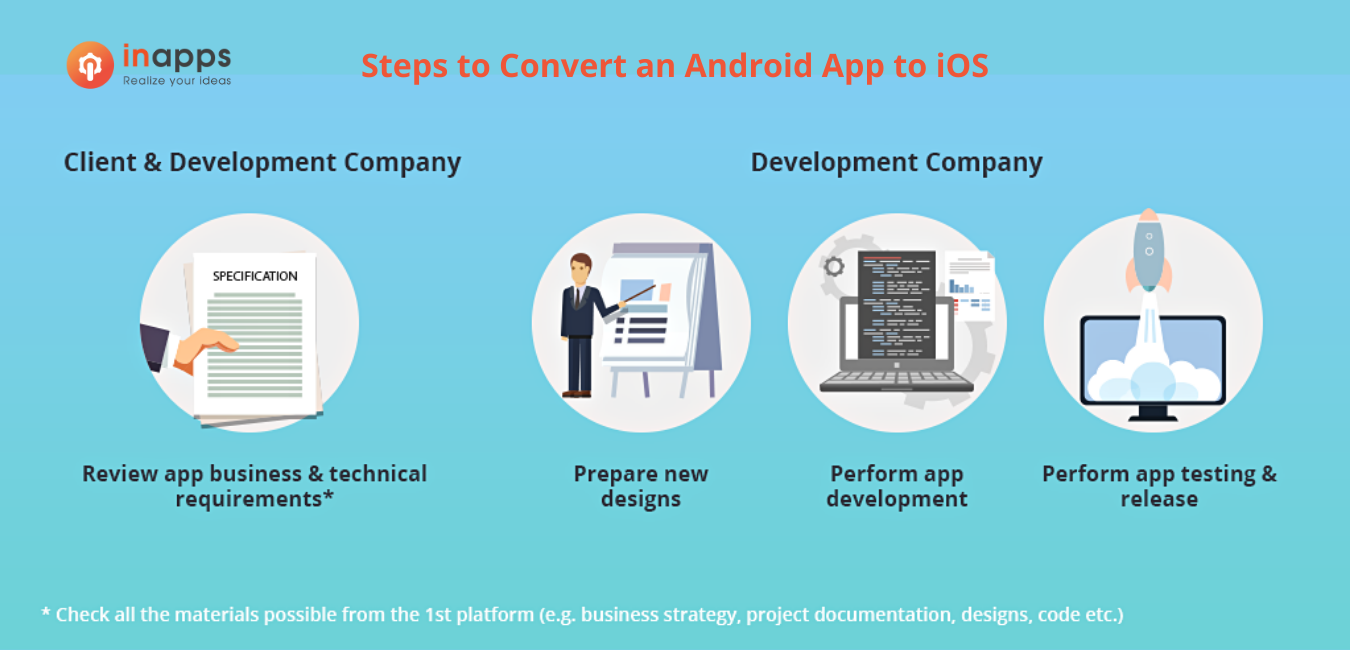
Step 1: Examine the App’s Requirements and Functionality
A good plan is required to convert an Android app to iOS successfully.
First and foremost, in collaboration with the client, the software development company gathers and analyzes all materials available from the existing app.
Functional specifications, app design, and source code, for example, should all be thoroughly researched.
This aids in the alignment of the app’s functionality and business logic. Some technical components may need to be replaced. Among these elements could be push notifications, changes to content, 3D Touch on iOS, etc.
The first step in converting an Android app to iOS is to divide the project revision into business and technical parts. As a result, the most efficient method is to delegate the gap analysis to two specialists, such as a Business Analyst and a Software Architect. This examination allows for the preparation of the scope of work to maximize the potential and performance of the new app.
As a result, here is a short checklist of critical technological points to consider:
- Review the app for optimization and potential enhancements.
- Check the business logic and apply it to the new project.
- Examine and approve compatibility with third-party frameworks included.
The following are some potential deliverables from the first step in converting an app:
- Market Research (optional)
- Work Breakdown Structure (WBS) – used to organize all project elements hierarchically.
- Mind-Map Functional Specification for a Project (list of features with their description)
- Design Review
Step 2: Modify the Design for the App
Because coding an app from scratch is required, the user interface and layout must be changed.
A common mistake is simply copying the existing UI (user interface) rather than modifying it as needed. As a result of such a blunder, the app’s look, feel, or navigation may be off.
1. Material Design Patterns vs. Flat Design Patterns
Google’s and Apple’s design patterns are not the same. Material design should be used when converting an Android app to iOS. Flat design patterns must be used when converting an Android app to iOS. The placement of the objects is the most noticeable difference. The design of the material appears to be more three-dimensional. In contrast, the design elements in the flat design are flat and direct.
2. User Interface Design
There are numerous UI components on iOS and Android. Let us now compare all of these interface distinctions.

3. What Fonts Should You Use When Converting Android apps to iOS?
The following are the native fonts for each platform:
- San Francisco is the iOS platform
- Roboto for the Android operating system
When converting an Android app to an iOS app, you can use custom fonts if necessary. Airbnb apps make use of some fantastic custom fonts. These apps use LL Circular, a non-serif font that adds consistency to both mobile app platforms.
4. Before converting an app, perform design slicing
The app design must be sliced into assets before the development process. This assists software developers in incorporating the corresponding design into the code.
When converting an Android app to an iOS app, the design is sliced in 1x *.pdf. Because this is a vector format, developers can easily resize it to 2x or 3x if necessary.
Step 3: Customize Coding and Architecture Components
As previously stated, when converting an Android app to iOS, developers must rewrite the code almost entirely from scratch. It is not possible to recompile the code. Aside from the programming language, the app uses some third-party solutions, libraries, and integrations. As a result, it is critical to ensure that the platform to which your iOS or Android app is converted is compatible with those components. Otherwise, some alternative tools should be used to replace the functionality.
Learn more: Custom app development services
Here is a list of potential pitfalls to help you avoid the most common blunders. These may be incredibly challenging when converting an Android app to iOS:
- In the case of a multi-language app, double-check the development work required.
- Examine the app’s localization capabilities (especially if converting an Android app to iOS)
- Check the work using out-of-the-box solutions (e.g., specific animation)
- Examine the backend of a system for potential changes (for example, functionality for push notifications or in-app purchases). This primarily refers to the conversion of an Android app to an iOS app.)
- Make a Google or Apple account first.
Step 4: Conduct Appropriate App Testing and launch
A well-thought-out software testing strategy allows for the creation of an excellent working product. In addition to app coding and design, converting an iOS app to an Android app or vice versa entails quality assurance. This service typically consumes around 30% of the total development time. Quality assurance engineers are testing the application regarding code functionality and correspondence in the design interface and navigation.
Here is a list of possible tests that could be performed during quality assurance:
- Functional evaluation
- Testing for security and access control
- Load and performance testing
- Testing for usability
- Testing for validity
- Acceptance by the user
It is important to note that to submit the app to the app marketplace correctly, it is strongly advised that you use standard tools, software, and devices for testing the specific platform to meet its guidelines. In general, when applying to Apple’s App Store, the rules are stricter.
Learn more: QA & QC testing services
How much does it cost to convert Android Apps to iOS
As previously stated, converting an Android app to an iOS app entails adapting features and design to meet iOS platform specifics, developing a corresponding backend such as implementing monetization models, etc.
During the meetings, the software development team defines all the project’s details like technical and functional documentation, application programming interface, communication protocols, and many others. The cost to convert Android apps to iOS is formed from all of the mentioned aspects.
Hey! I hope you like this blog post. If you need to hire a team to develop your mobile apps, feel free to drop us a line, and we’ll get back to you shortly.
Let’s create the next big thing together!
Coming together is a beginning. Keeping together is progress. Working together is success.




